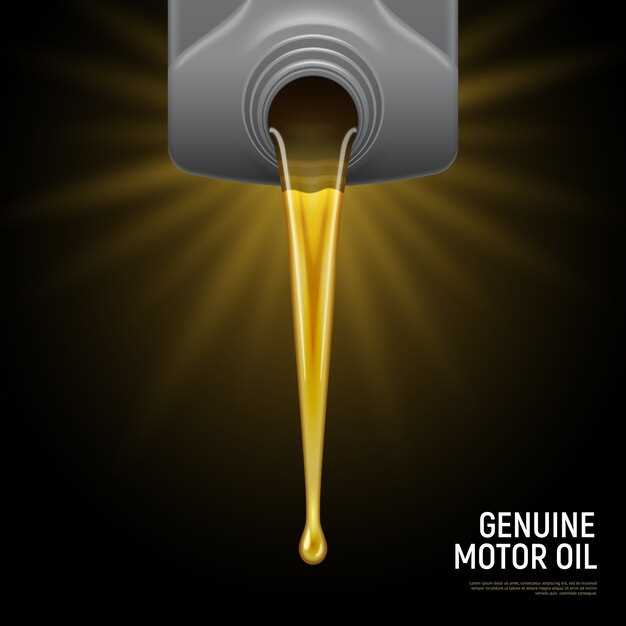
Regular maintenance is crucial for the longevity of your motorcycle, and one of the most vital aspects of this maintenance is oil changing. Understanding when to change your motorcycle oil can significantly impact engine performance and lifespan. Choosing the right intervals is essential, as both over-changing and neglecting to change the oil can lead to complications down the line.
Motorcycle oil serves multiple functions, including lubrication, cooling, and cleaning of engine components. Over time, oil degrades and loses its effectiveness, making it imperative to check the oil level and condition regularly. Depending on various factors such as engine type, riding style, and environmental conditions, the frequency of oil changes may vary. Generally, it is recommended to change your oil every 3,000 to 5,000 miles, but always refer to your manufacturer’s guidelines for your specific model.
Participating in regular oil changes not only ensures a smoother ride but also helps in maintaining the overall health of your motorcycle. By tracking your oil changing routine diligently, you’ll prolong the life of your engine and maximize your investment. The benefits of consistent oil changes extend beyond just engine performance; they can also lead to better fuel efficiency and reduced emissions, making your motorcycle more environmentally friendly.
Understanding Manufacturer Recommendations for Oil Changes

Each motorcycle manufacturer provides specific guidelines regarding oil change intervals, which are crucial for maintaining engine performance and longevity. These recommendations are typically found in the owner’s manual and are designed to address the unique needs of each motorcycle model.
Manufacturers often base their oil change schedules on various factors, including engine type, riding conditions, and the type of oil used–mineral, synthetic, or a blend. It is vital for riders to adhere to these guidelines to ensure that their motorcycle operates efficiently and to avoid potential damage.
For instance, many manufacturers suggest changing the oil after the first 500 to 1,000 miles for a new motorcycle, as this allows for the removal of metal shavings from the break-in process. After that initial change, intervals may extend to every 3,000 to 6,000 miles or once a year, depending on the specific model and the riding habits of the owner.
Riders should also consider their typical riding conditions. Frequent short trips, stop-and-go traffic, or riding in extreme temperatures can lead to more frequent oil changes than what is recommended for typical riding scenarios. Additionally, using high-performance synthetic oil might allow for longer intervals between changes compared to conventional options.
Ultimately, understanding and following the manufacturer’s recommendations for oil changes is essential not only for optimal motorcycle performance but also for the longevity of the engine. Regular maintenance in line with these guidelines will help riders minimize repair costs and enhance their overall riding experience.
Identifying Signs That Indicate an Oil Change is Needed
Regular maintenance is crucial for the longevity of your motorcycle, and oil changes are a key aspect of that maintenance schedule. Recognizing the signs that your oil needs replacement can help prevent engine damage and ensure optimal performance.
One of the most noticeable indicators is the oil color and consistency. Fresh oil typically has a transparent amber hue, while used oil may appear dark and murky. If the oil takes on a black or gritty texture, it is time for a change. Additionally, if you notice a metallic sheen in the oil, this could indicate excessive wear in the engine.
Another important sign is the oil level on the dipstick. If the level is consistently low, oil consumption may be higher than normal, suggesting that a change is necessary. Regularly checking the level can help you stay on top of this aspect of maintenance.
Pay attention to changes in engine performance or noise as well. A loud or rough-running engine may indicate that the oil is failing to lubricate properly. If you experience increased engine temperature or overheating, it could also be a sign that the oil is degrading and needs to be changed.
Finally, keep track of your mileage since the last oil change. Many manufacturers recommend an oil change every 3,000 to 5,000 miles, but this can vary based on riding conditions. Adhering closely to this schedule can be beneficial for maintaining engine health and performance.
Creating a Maintenance Schedule Based on Riding Habits

Establishing a maintenance schedule for motorcycle oil changes is crucial for preserving engine health and ensuring longevity. The frequency of oil changes largely depends on your riding habits and conditions. By analyzing your typical usage, you can create a personalized schedule that optimizes performance.
For riders who frequently navigate through heavy traffic or face stop-and-go conditions, it is recommended to change oil every 3,000 miles or every 3 months, whichever comes first. The constant stopping and starting generates more engine heat and can break down the oil more quickly.
If your riding predominantly involves long-distance trips at steady speeds, your oil can last longer. In such cases, consider changing your oil every 5,000 to 7,000 miles. However, it is still essential to monitor the oil condition regularly and adapt the schedule based on observed wear.
For off-road enthusiasts, who often encounter dust and debris, a more frequent oil change is necessary. In these situations, aim to change oil every 1,500 to 2,500 miles to prevent contaminants from damaging the engine.
Regardless of your riding style, always consult your motorcycle’s owner manual for manufacturer recommendations. Creating a maintenance schedule tailored to your unique driving habits will extend your motorcycle’s lifespan and enhance your overall riding experience.
Regularly checking oil levels and quality between changes is also advisable. If the oil appears dark or gritty, even if the mileage hasn’t reached the change interval, it may be time for an oil change sooner than planned. Adjusting your maintenance schedule based on these assessments is key for keeping your motorcycle running smoothly.












